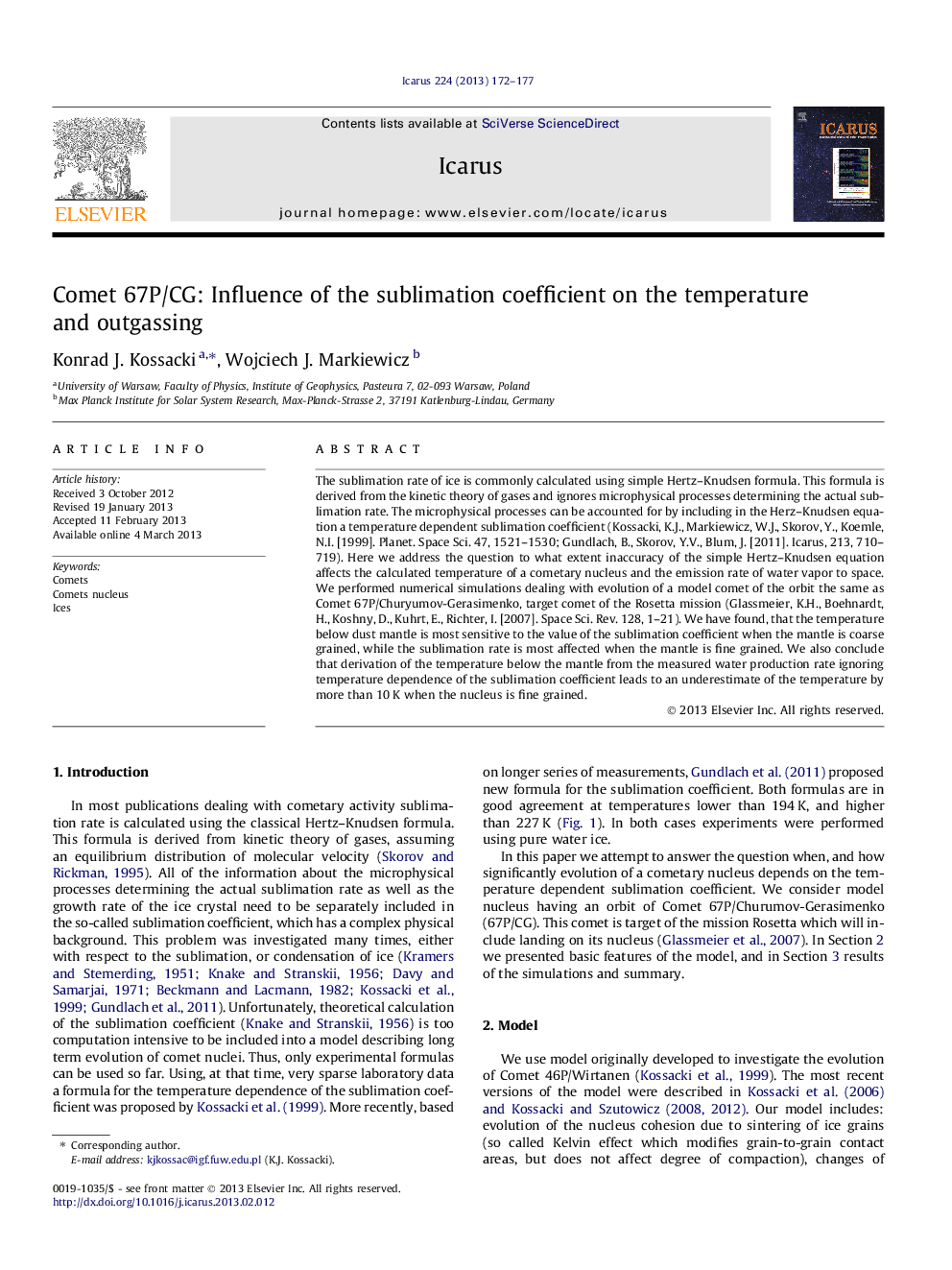| Article ID | Journal | Published Year | Pages | File Type |
|---|---|---|---|---|
| 1773538 | Icarus | 2013 | 6 Pages |
The sublimation rate of ice is commonly calculated using simple Hertz–Knudsen formula. This formula is derived from the kinetic theory of gases and ignores microphysical processes determining the actual sublimation rate. The microphysical processes can be accounted for by including in the Herz–Knudsen equation a temperature dependent sublimation coefficient (Kossacki, K.J., Markiewicz, W.J., Skorov, Y., Koemle, N.I. [1999]. Planet. Space Sci. 47, 1521–1530; Gundlach, B., Skorov, Y.V., Blum, J. [2011]. Icarus, 213, 710–719). Here we address the question to what extent inaccuracy of the simple Hertz–Knudsen equation affects the calculated temperature of a cometary nucleus and the emission rate of water vapor to space. We performed numerical simulations dealing with evolution of a model comet of the orbit the same as Comet 67P/Churyumov-Gerasimenko, target comet of the Rosetta mission (Glassmeier, K.H., Boehnardt, H., Koshny, D., Kuhrt, E., Richter, I. [2007]. Space Sci. Rev. 128, 1–21). We have found, that the temperature below dust mantle is most sensitive to the value of the sublimation coefficient when the mantle is coarse grained, while the sublimation rate is most affected when the mantle is fine grained. We also conclude that derivation of the temperature below the mantle from the measured water production rate ignoring temperature dependence of the sublimation coefficient leads to an underestimate of the temperature by more than 10 K when the nucleus is fine grained.
► The Hertz–Knudsen formula for the sublimation rate ignores microphysical processes. ► The role of microphysical processes can be included in the sublimation coefficient. ► We investigate to what extend sublimation coefficient affects comet temperature. ► The sub-dust temperature is most sensitive when the mantle is coarse grained. ► The diurnal average of H2O emission is most affected when the mantle is fine grained.
